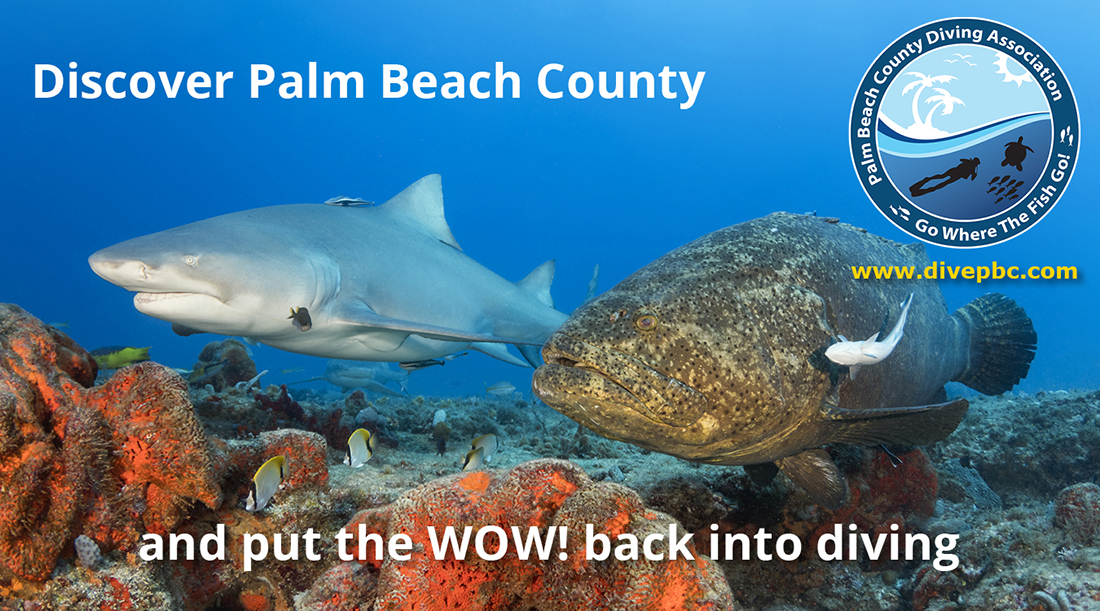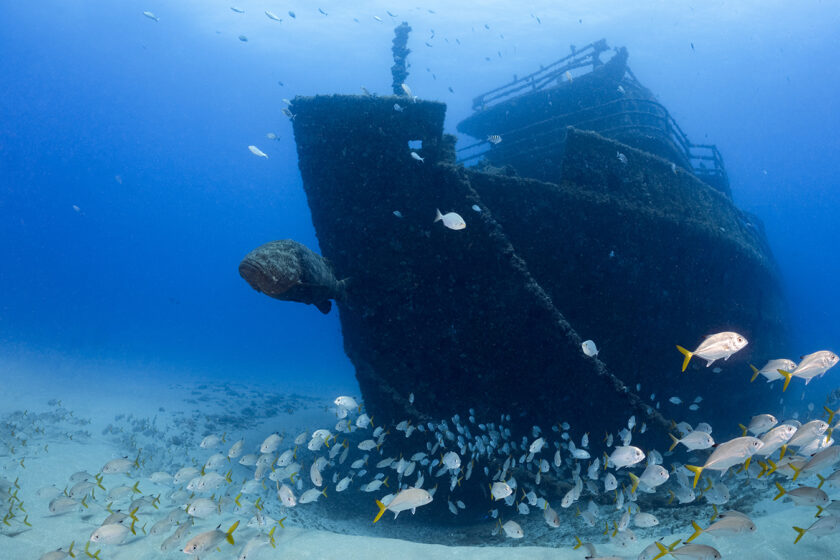In my previous article ‘Where Big Things Prowl’ I provided a tour of the unique reef systems and described some of the interesting varieties of large marine life that can be found off Florida’s Palm Beach County coast. This time, I’d like to focus on the unique wrecking diving experiences that add another facet to the region’s diving scene.
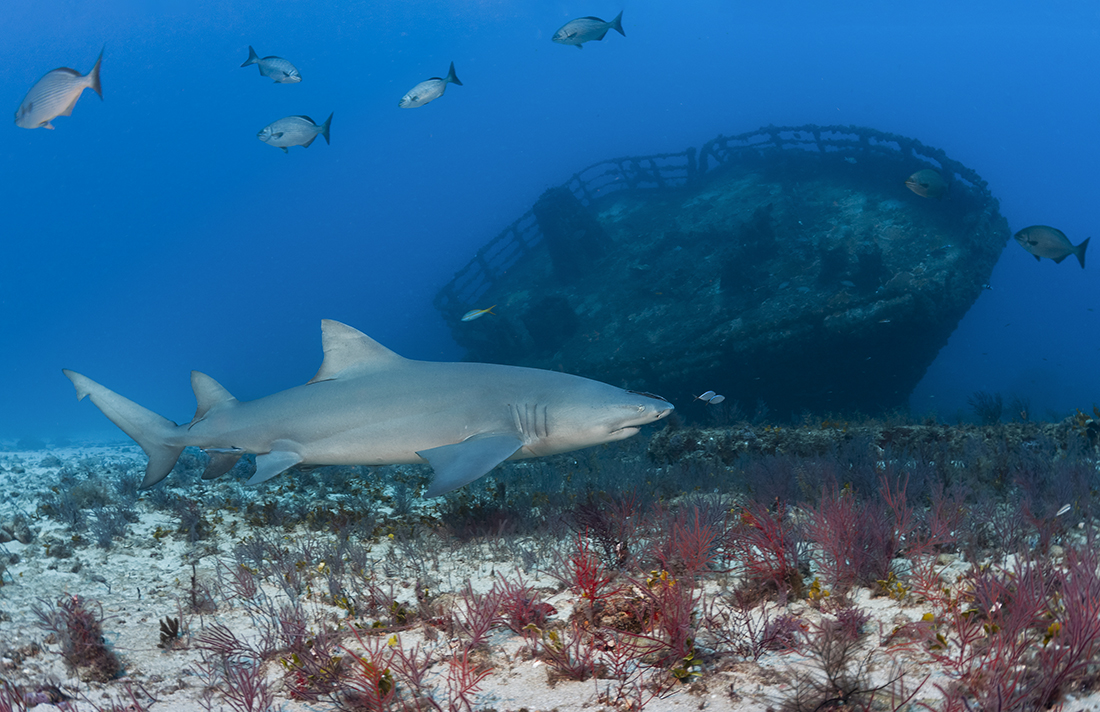
A lot of destinations can offer one or more wrecks to dive, and some provide more than you could explore in a week of hard diving. What sets Palm Beach Florida apart from other places is that several sites here are not made up of just one wreck, but instead include two to four wrecks. Think about it, a dive site with multiple wrecks that can be seen within the span of a single dive.
Running Down The Corridor
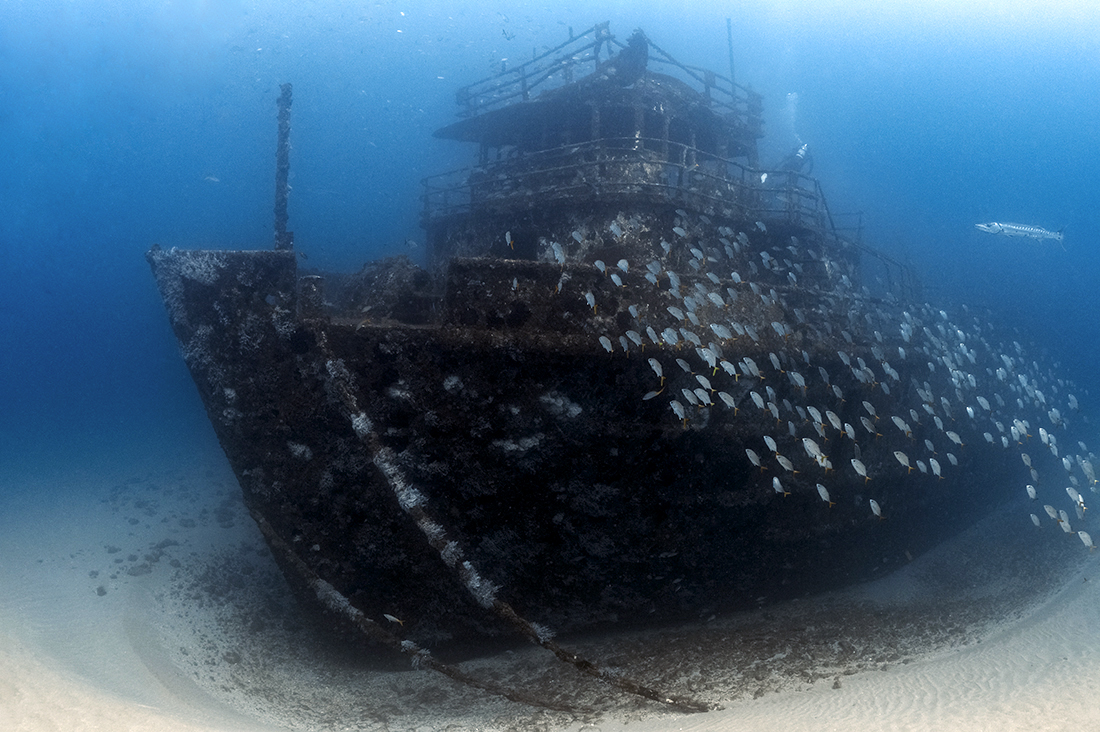
A good place to start our Palm Beach Wreck Trek tour is at a site known as the Corridor, which is located straight out of the Lake Worth Inlet at West Palm Beach. This collection includes five shipwrecks lined up in a north-south row: the M/V Anna Celica, Mizpah, PC-1174, Amaryllis and — if your air consumption is good —a small barge to wrap things up. In addition to these five wrecks, there is a nearby pile of concrete debris salvaged from the demotion of the old Blue Heron bridge that has now become a marine life haven.
Because this collection of wrecks sits in close proximity to the Gulf Stream, currents can vary widely from little to strong, which makes the deployment of a downline tied into the wreck impractical. This is why Palm Beach County’s artificial reef program has placed most of the region’s wrecks in a linear pattern that is in line with the Gulf Stream’s northerly flow up the coast.
To dive the Corridor, dive boats generally drop divers 200-300 feet up current of the first wreck in the lineup to allow ample time for divers to complete their descent to the bottom. As you drift into the wreck lineup, the first thing that comes into view is the Ana C’s stately tall bow, which towers above a white sand floor.
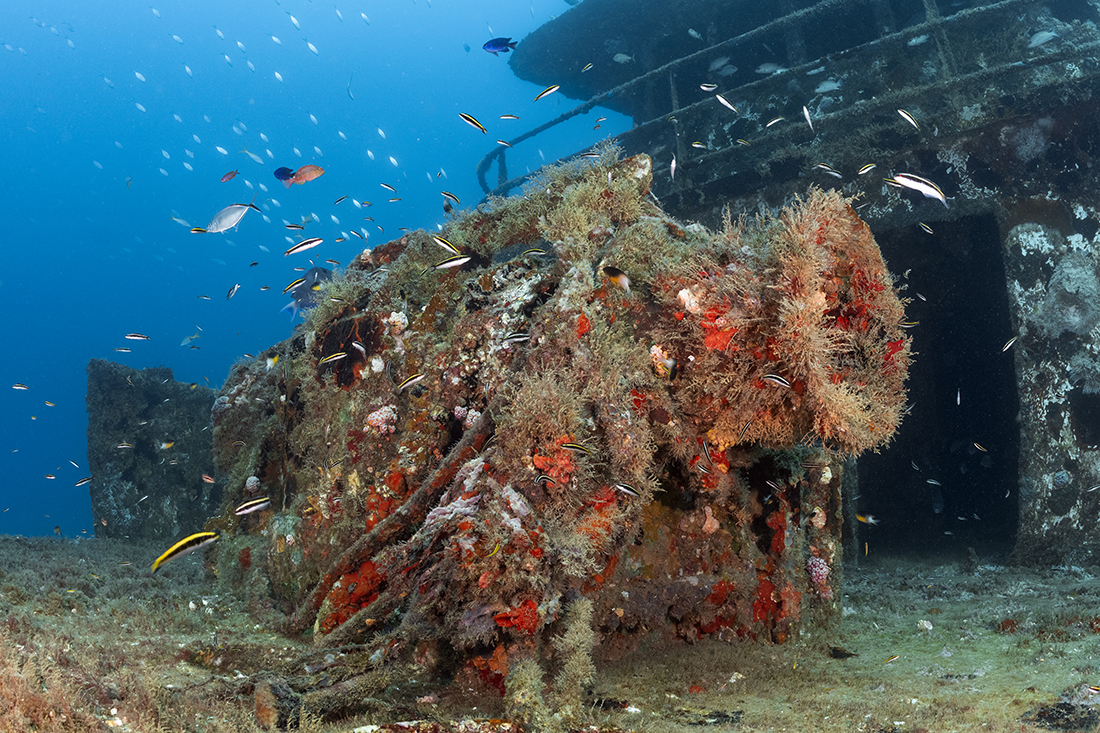
Placed in 85 feet of water July of 2016, the M/V Ana Cecilia sits upright with a stately profile that has the roof of her wheelhouse rising to within 55 feet of the surface. Having weathered a few tropical storms, this 170-foot heavy equipment cargo ship remains as intact as when she was first sent to the bottom, albeit with a bit more marine growth across her steel skeleton.
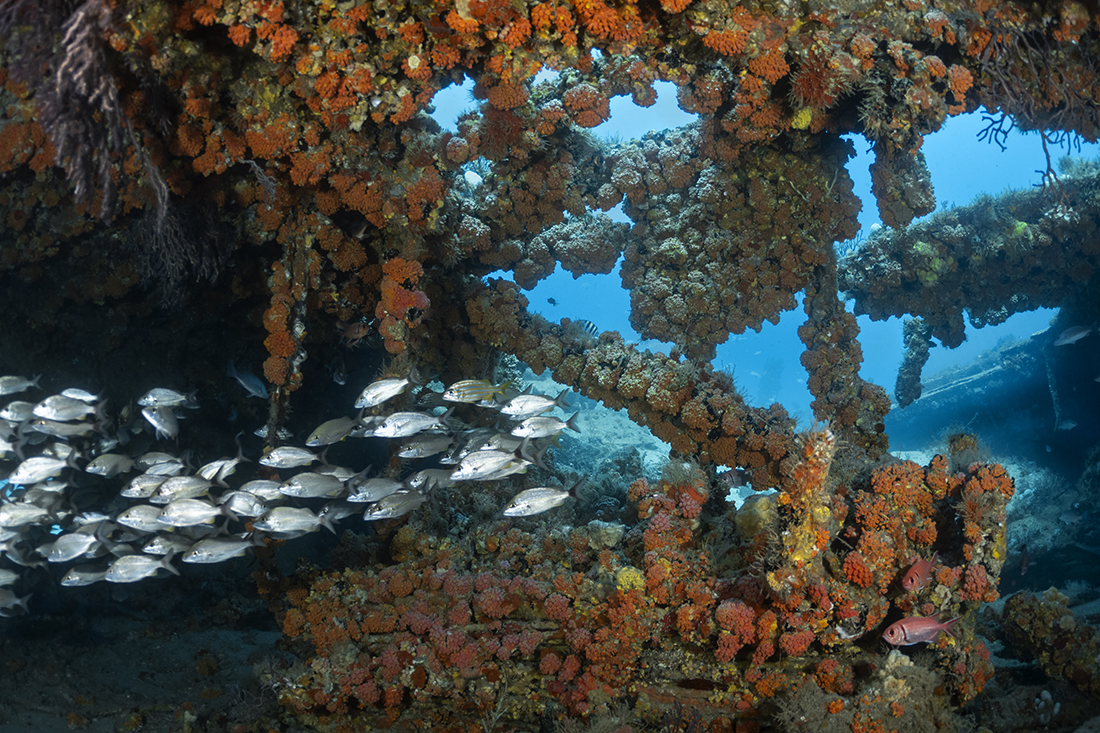
Once finished with the Ana C, divers can ride the currents from her stern to a pair of wrecks that lie some 175 feet to the north. The Mizpah is a 185-foot steel-hull luxury yacht built in 1926. Today, it is the Palm Beach Coast’s oldest artificial reef, put down in 1968. While the Ana C handled the effects of recent tropical storm activity, the Mizpah, unfortunately, did not. What remains is a predominately flattened hulk. The only portion of the ship that allows for partial penetration is near what was once the bow. At this point in the dive, things can get a little confusing as to what wreck you are exploring, as you will also be viewing the remains of the PC-1174.
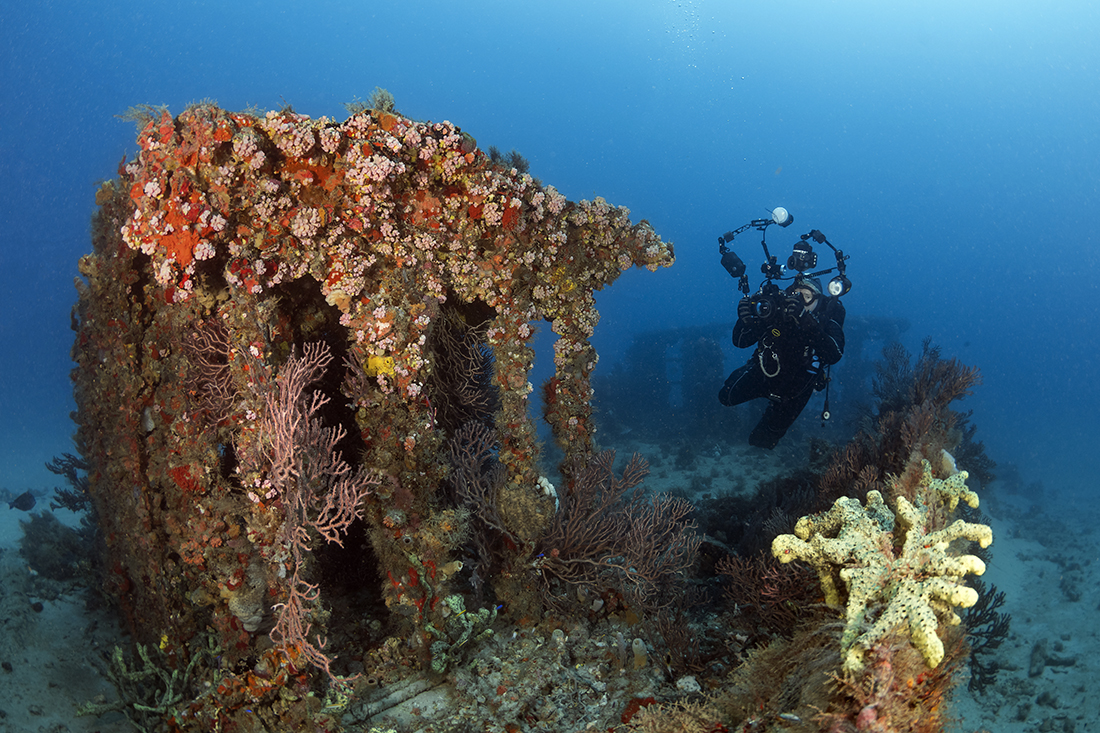
Sunk later the same year as the Mizpah, the PC-1174 (standing for Patrol Craft, designation 1174) has over time broken into several pieces, with the largest piece now resting under the bow of the Mizpah and the second-largest piece another 40 feet to the north. At both the Ana Cecilia and the Mizpah/PC-1174 wrecks, there is a strong possibility that you will run into one of the site’s resident goliath groupers. The largest one there, named Braveheart, may come out to politely pose for a few photos.
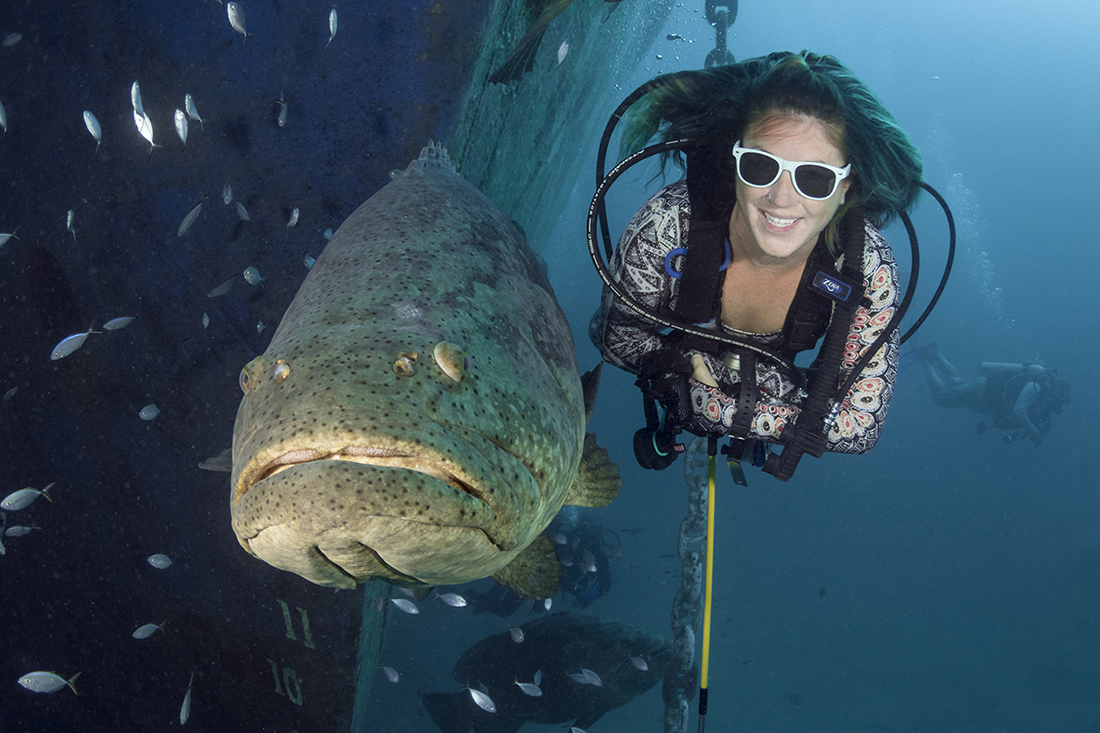
Riding the current’s northbound flow while following a rock pile placed as a navigational aid will bring you to the Corridor’s fourth wreck, the Amaryllis. This vessel ran aground on Singer Island on September 8, 1965, as a result of storm-churned seas created by Hurricane Betsy. The undertaking to remove the 450-foot, 7,200-ton Greek banana freighter from Singer Island’s shoreline took three years to complete. As part of the salvage process, her entire superstructure was removed right down to the lower decks, rendering the wreck we see today as a huge canoe.
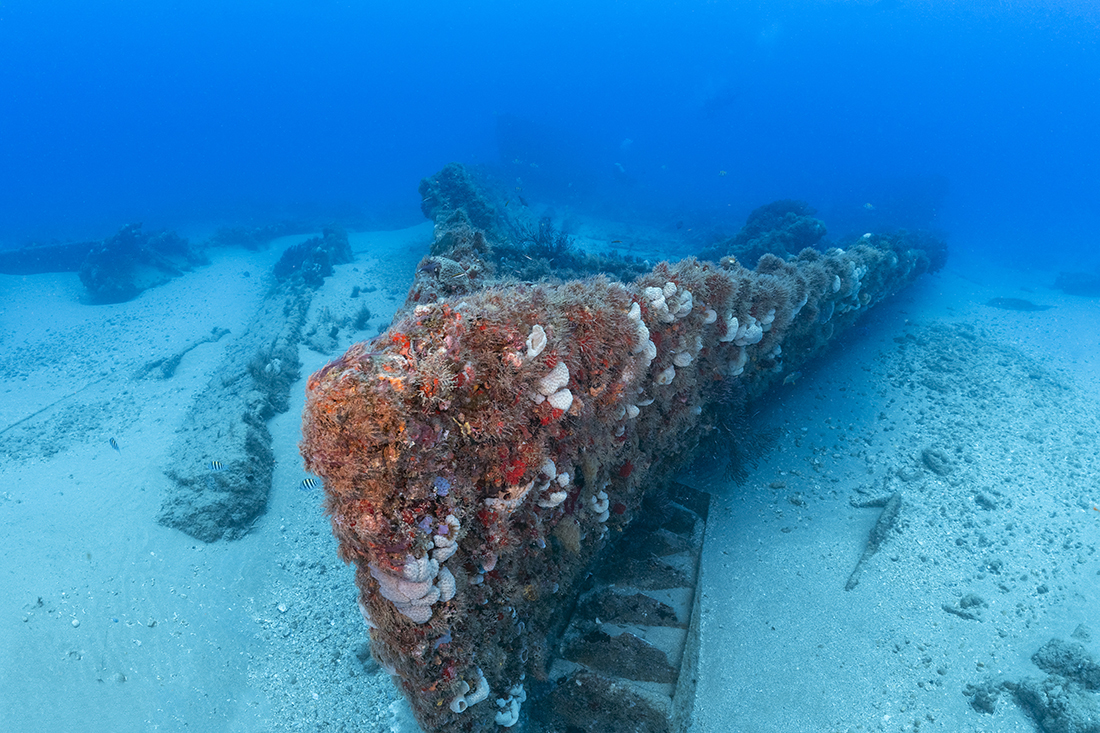
Should you still have enough air to continue after surveying the Amaryllis, you will likely make it to the fifth wreck on the list, the China Barge. While small in size, the wreck is still an amazing spot, as it has lots of marine growth and fish life around it.
Four in a Row – Diving the Governor’s Riverwalk Wreck Trek
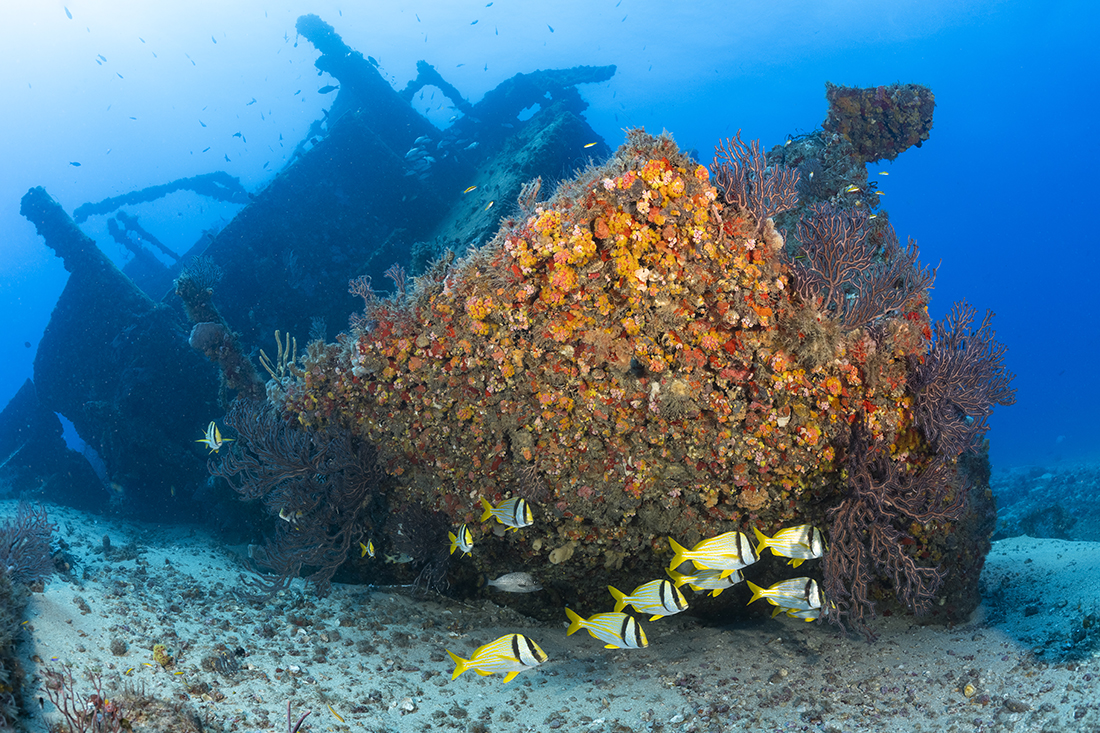
From start to end the Corridor is a 1,700-foot-long drift dive, but it is by no means the only signature wreck trek in the area. A little farther offshore and a bit south the Lake Worth Inlet is Governor’s Riverwalk. Like the Corridor, Governor’s is comprised of four large coastal freighters that were originally seized for drug smuggling and later sold for scrap. Seeing an opportunity, the Palm Beach County’s Artificial Reef Program purchased the ships to create a new dive site in 90 feet of water.
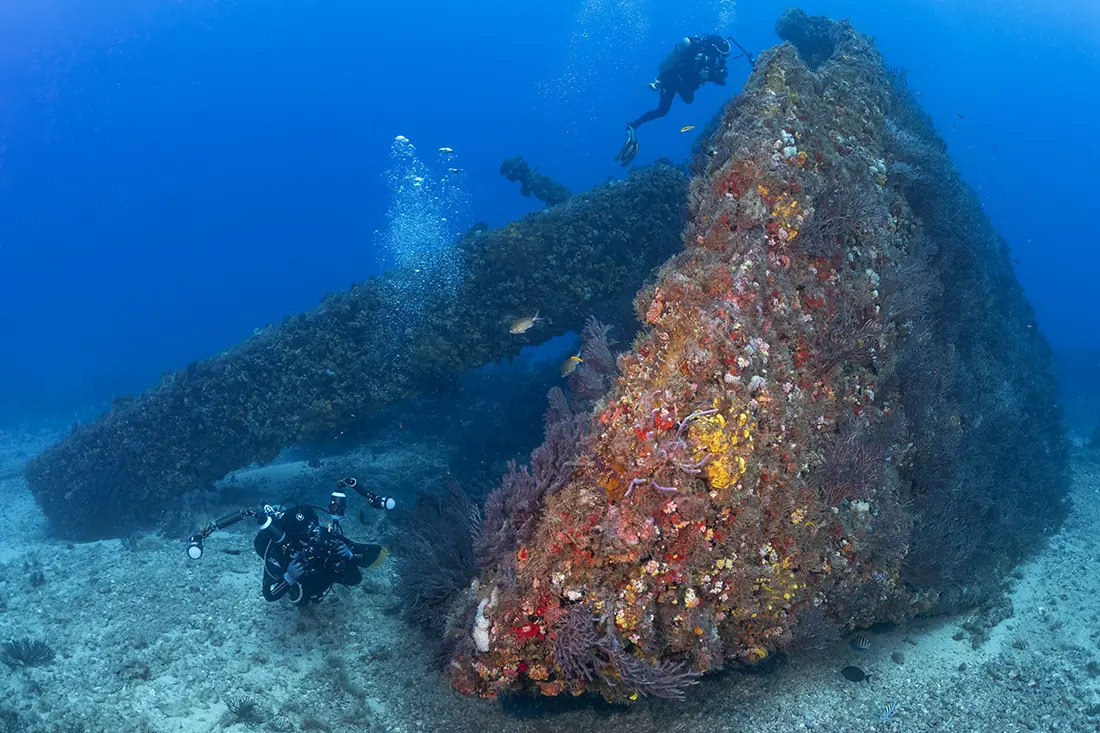
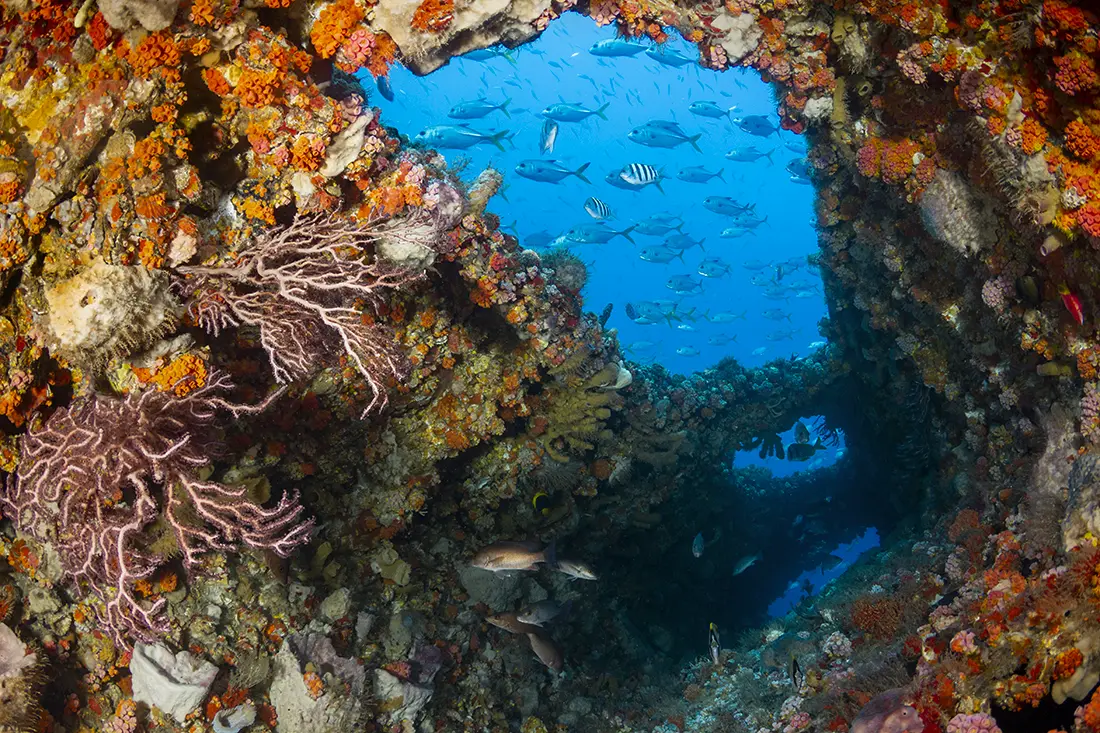
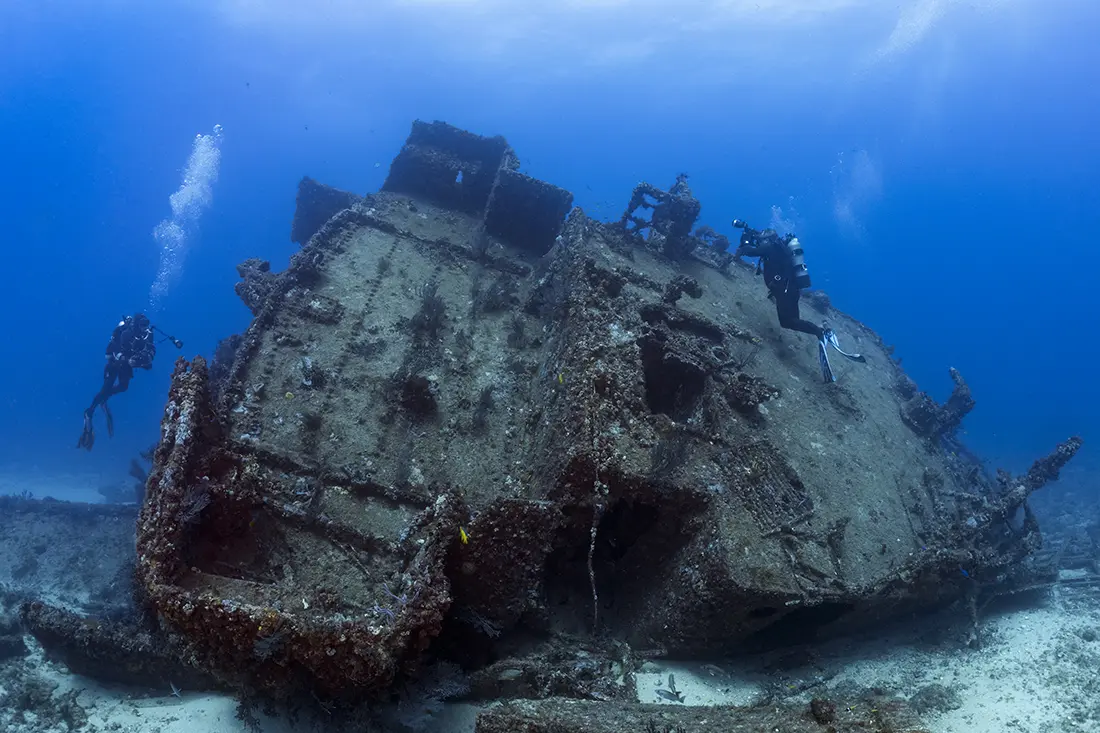
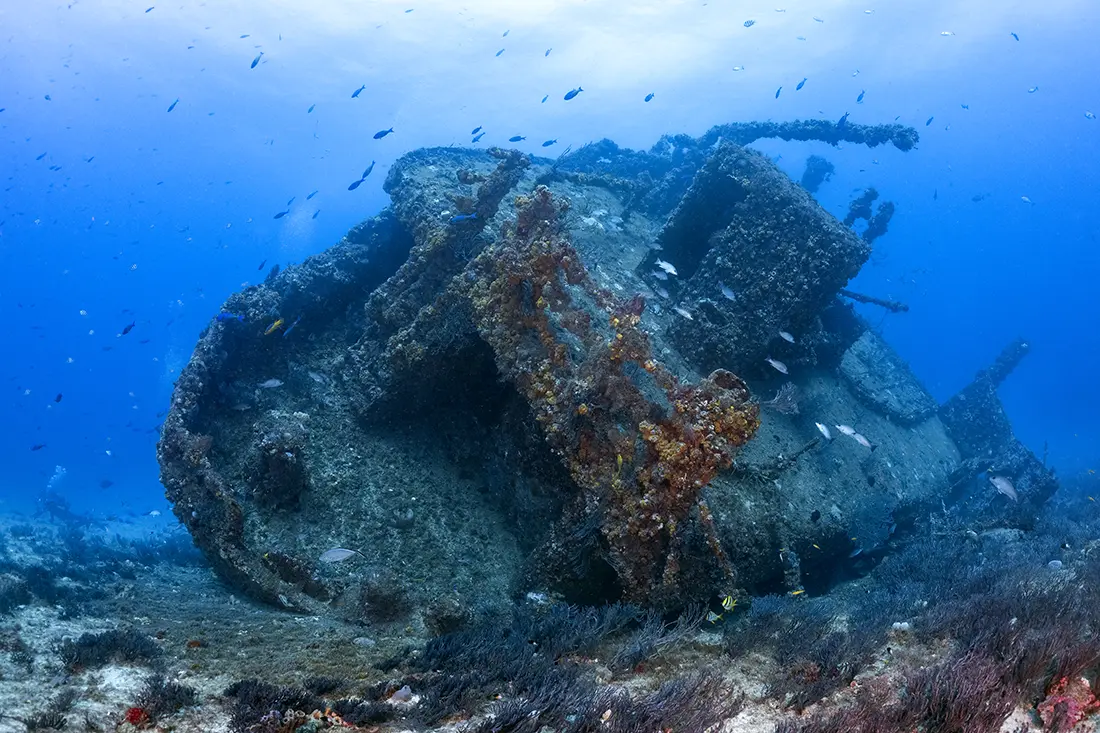
The first three were sunk together in February 2002 in consecutive order with the 184-foot Shasha Boekanier going down first, followed by the 180-foot St. Jacques, and the 170-foot Gilbert Sea. The fourth vessel, the 174-foot Thozina was added nine months later directly behind the Gilbert Sea. Knowing that currents in this area are a constant factor and that dives would be conducted as drifts, the organizers placed these vessels in a straight line running south to north like a convoy underway.
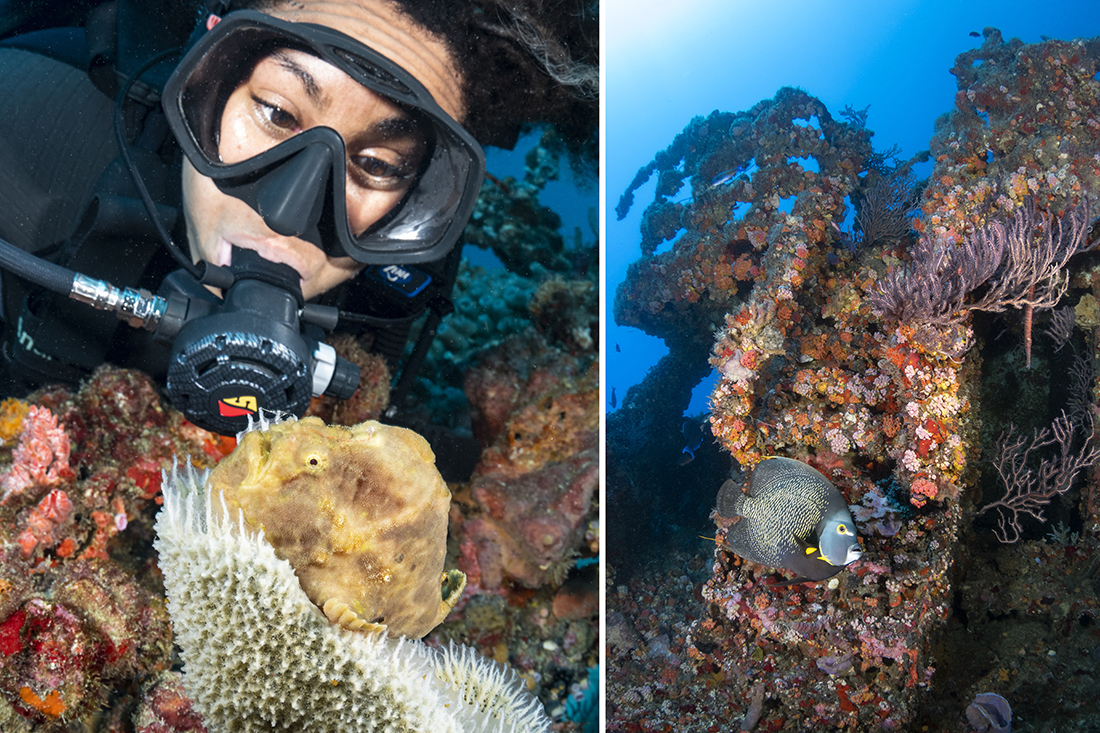
In the relatively short span of time that ships have been down, the raw power of mother nature is more than evident. Today, all four freighters lie broken apart, each separated midship. The stern section of the Shasha Boekanier is now closer to the bow of the St. Jacques instead of its own. The same currents that are as much to blame for this physical dismembering is also responsible for providing the wrecks with a luxuriant living skin of corals and sponges in shades of red, orange, and yellow. When conditions are right, with the vibrant blue waters of the Gulf Stream overhead and the bounty of marine life that resides there, the Governor’s is by far one of the most colorful artificial reef systems on Florida’s southeast coast.
Jupiter Wreck Trek – Where the Big Fish Gather
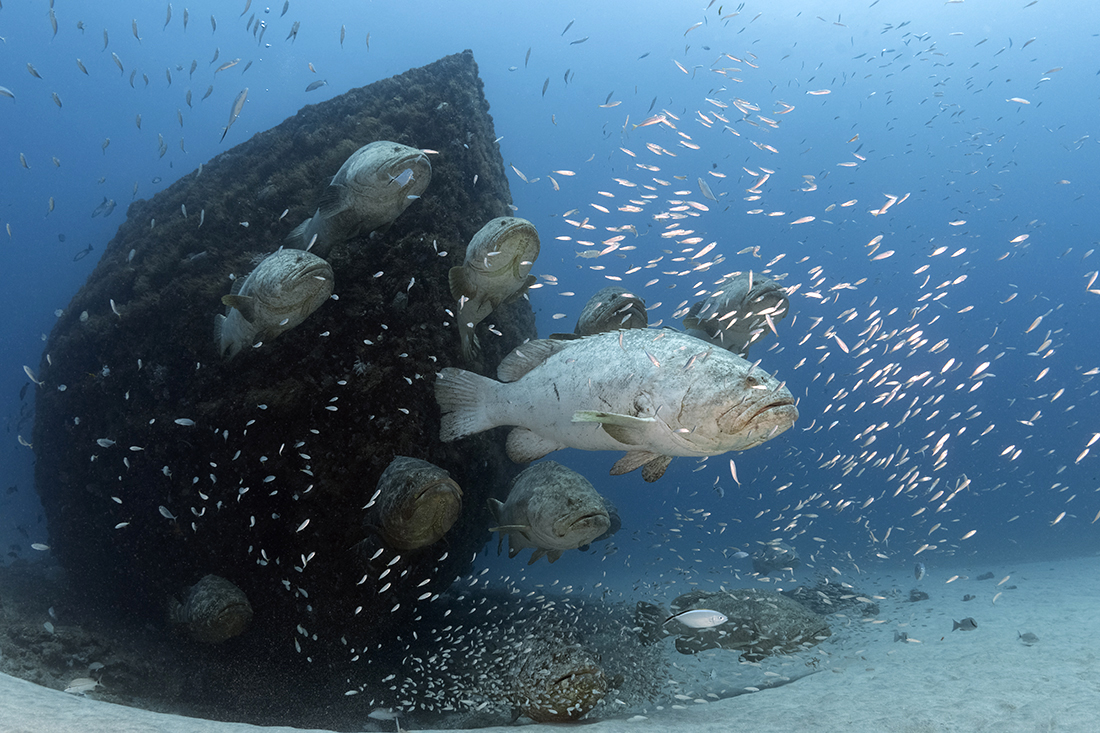
Travel north to Jupiter, divers will find another compilation of wrecks to dive. The site, which goes by two names, the Zion Train, and the Jupiter Wreck Trek, is comprised of two freighters — the Eso Bonaire and Zion Train — and a barge, all set in 90 feet of water. Although the Esso Bonaire is the oldest, sunk in the 1980s, the name Zion Train stuck because it is the first wreck divers will see at the start of the drift.
Scuttled in June 2003, the 164-foot-long Zion Train did what a lot of freighters do when confronted by storm surges from hurricanes such as Frances and Jean, which hit Florida in 2004. They break apart. The largest piece divers will see in the 90-foot depths will be the freighter’s stern section, with some of what’s left of the hull off to one side. In short, mother nature really ripped the Zion a new one. Coming off the Zion’s stern section, the current will bring divers past the small hopper barge known as Miss Jenny, then after a 100-foot-long open expanse of ocean, to the Esso Bonaire.
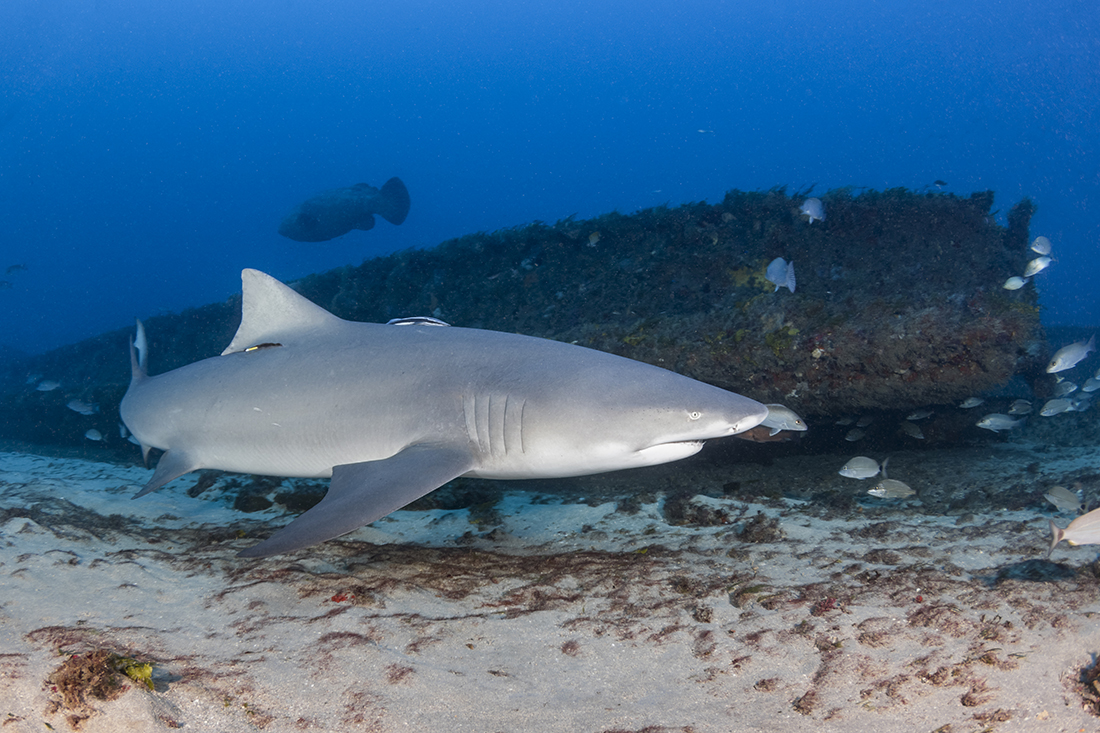
The real attraction of these wrecks isn’t dramatic profiles or a vibrant palette of marine growth. It’s their ability to draw in a sizable population of fish life. In addition to passing schools of jacks and spadefish, the Jupiter Wreck Trek’s signature draw is sharks, with lemon sharks being the most prevalent. And then there are the goliath groupers. From mid-August through September, the Zion Train and Bonaire serve as one of the region’s two key aggregation sites for the goliath grouper spawning season.
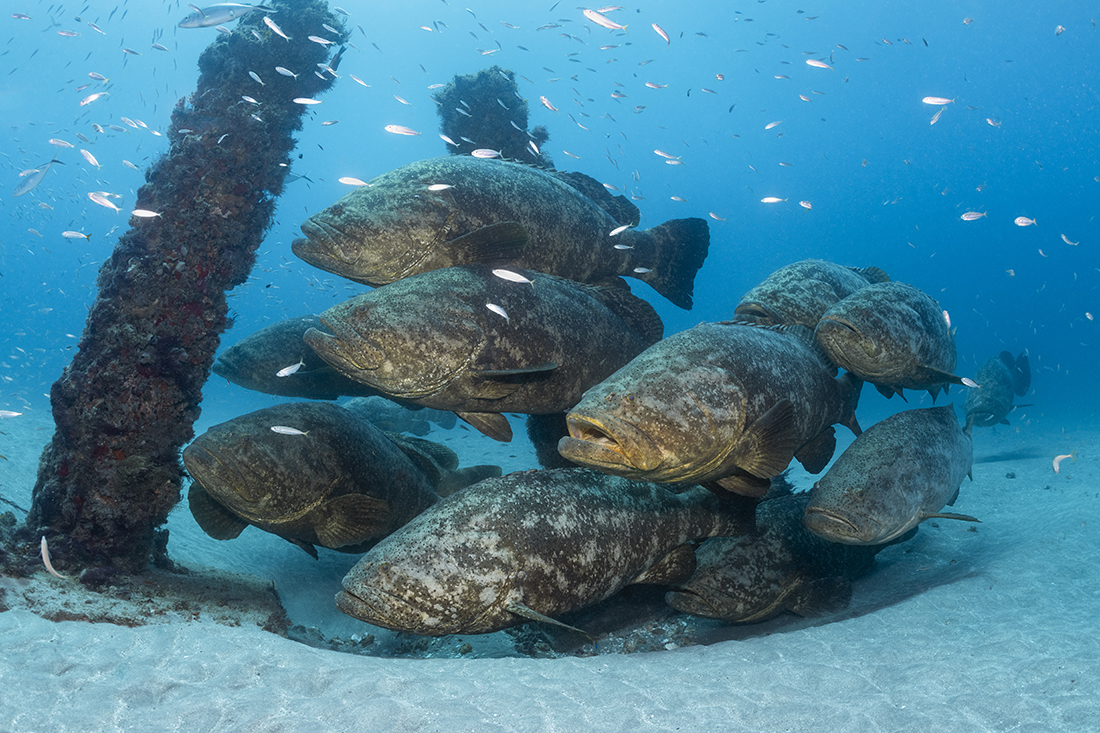
The other is the MG-111, a broken-up barge wreck a little closer to shore in 65 feet of water. When this spawning occurs, Jupiter’s wrecks become the place where divers can see gatherings of 40 to 60 goliaths in the span of a single dive.
Three More to Discover
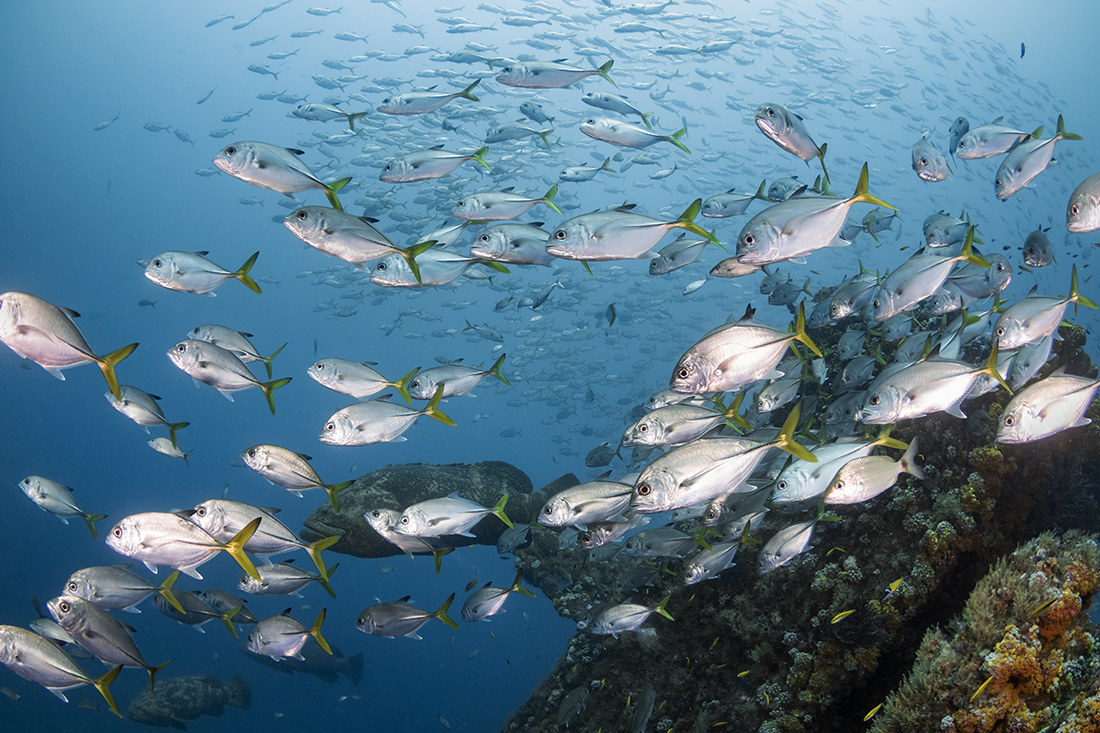
Farther south, Boynton Beach’s hallmark wreck dive is the M/V Castor. There are two other wrecks nearby, but unlike the three prior wreck treks I have described, these vessels usually become standalone wreck dives. The Budweiser Bar is a 169-foot-long coastal freighter sent to the bottom in 1987and now sitting upright in 95 feet of water. The 167-foot Capt. Tony, put down in October 1996, is also sitting upright nearby at a depth of 85 feet. Although these two wrecks can be done as a drift by simply following the concrete and boulder debris trail that extends from the Budweiser Bar’s stern to the bow of the Capt. Tony, both wrecks, like the Castor, are generally performed individually by local dive charters.
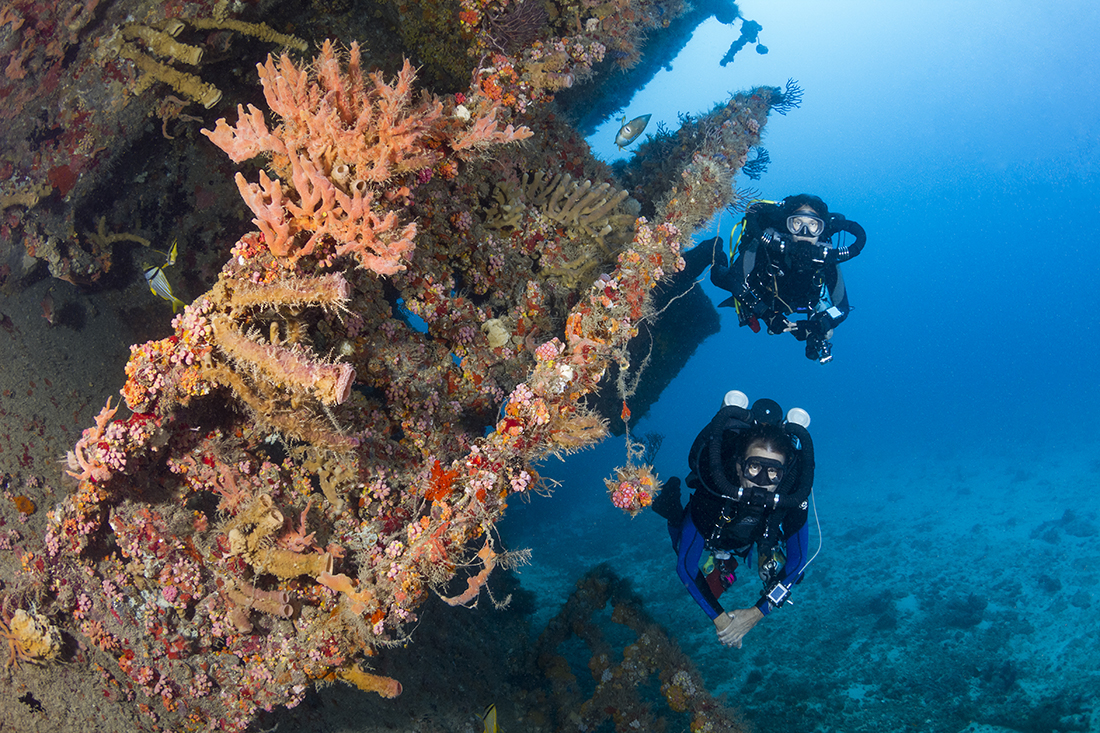
Structurally, the Castor (excuse the pun) is a wreck. Since the ship’s placement in December 2001, this 238-foot freighter has undergone several changes. Her most current layout has the aft wheelhouse canted 45 degrees to the right, the bow section is completely over on its left side and what used to be the midship cargo section is pancaked on the bottom in 110 feet of water. And just like the four freighters at Governor’s, the Castor is profusely colonized by orange cup corals and sponges. But even that feature takes a back seat to the fish life that favors the wreck.
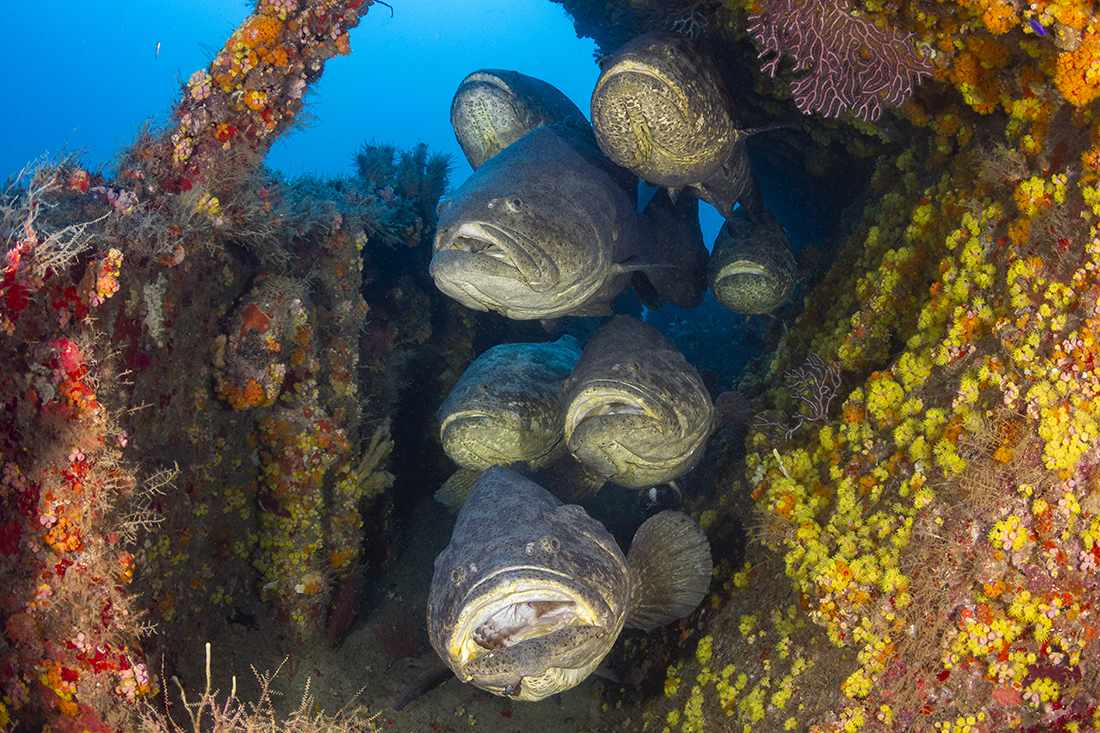
During the months of August and September, the Castor becomes the southernmost spawning aggregation site on Florida’s east coast for goliath grouper. When the big fish are there, so are the scab. These small bait fish arrive in schools large enough to shroud most of the wreck. While their purpose is to feed on the eggs released by the giant groupers during spawning, the scad in turn become prey to schools of jacks and barracuda. As the saying goes, big fish eat little fish.
This concludes my overview of Palm Beach Reefs & Wrecks. I can assure you more articles of diving this region of Florida’s Southeast coast as well as some of the marine life that is found here will be forthcoming.
To discover more about diving in Palm Beach County, Florida, Click on the ad below.
